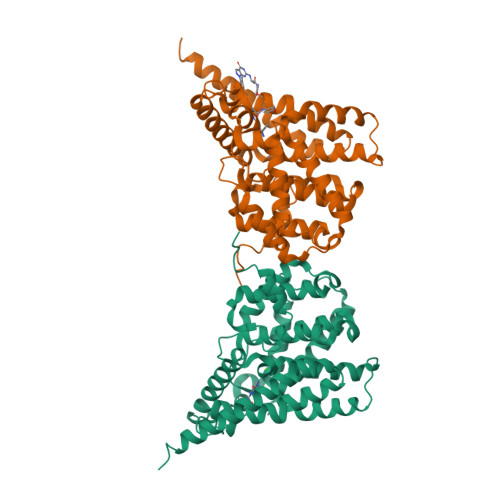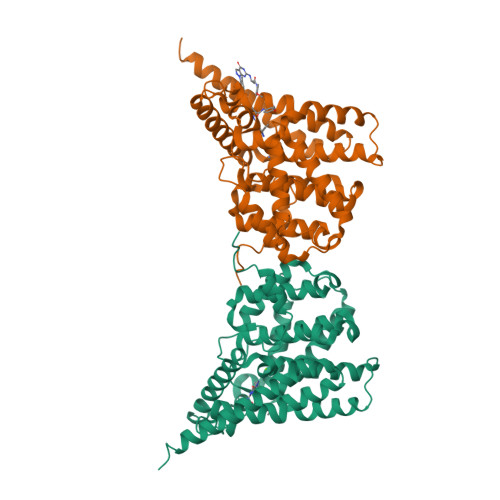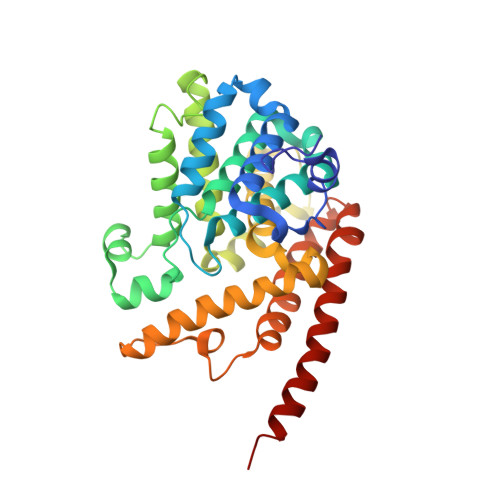Structure-Based Discovery of Highly Selective Phosphodiesterase-9A Inhibitors and Implications for Inhibitor Design.
Meng, F., Hou, J., Shao, Y.X., Wu, P.Y., Huang, M., Zhu, X., Cai, Y., Li, Z., Xu, J., Liu, P., Luo, H.B., Wan, Y., Ke, H.(2012) J Med Chem 55: 8549-8558
- PubMed: 22985069
- DOI: https://doi.org/10.1021/jm301189c
- Primary Citation of Related Structures:
4GH6 - PubMed Abstract:
A new series of phosphodiesterase-9 (PDE9) inhibitors that contain a scaffold of 6-amino-pyrazolopyrimidinone have been discovered by a combination of structure-based design and computational docking. This procedure significantly saved the load of chemical synthesis and is an effective method for the discovery of inhibitors. The best compound 28 has an IC(50) of 21 nM and 3.3 μM, respectively, for PDE9 and PDE5 and about 3 orders of magnitude of selectivity against other PDE families. The crystal structure of the PDE9 catalytic domain in complex with 28 has been determined and shows a hydrogen bond between 28 and Tyr424. This hydrogen bond may account for the 860-fold selectivity of 28 against PDE1B, in comparison with about 30-fold selectivity of BAY73-6691. Thus, our studies suggest that Tyr424, a unique residue of PDE8 and PDE9, is a potential target for improvement of selectivity of PDE9 inhibitors.
Organizational Affiliation:
School of Chemistry and Chemical Engineering, Sun Yat-Sen University, Guangzhou 510275, People's Republic of China.



















